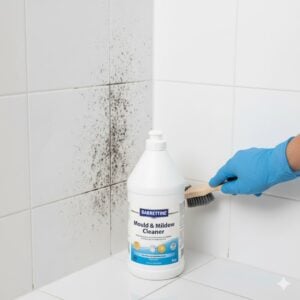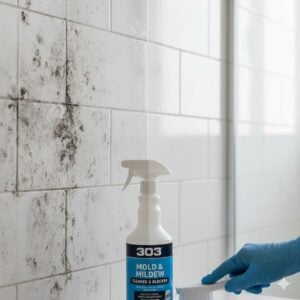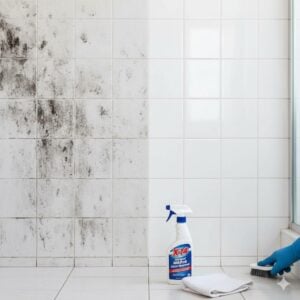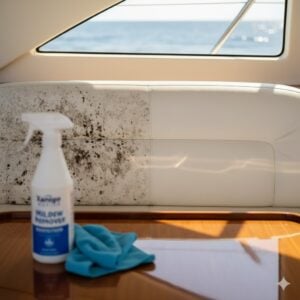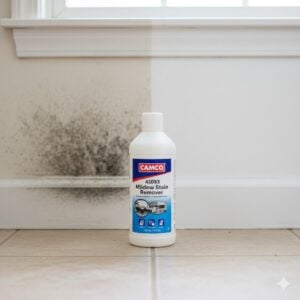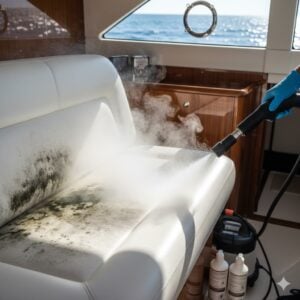Biohazard cleanup is a critical process, demanding not just thoroughness but also a deep understanding of safety and hygiene protocols. In scenarios ranging from unattended deaths to hazardous material spills, the need for professional biohazard cleanup services is paramount. This specialized field requires a systematic approach to effectively manage the risks and ensure the area is returned to a safe, habitable state. In this article, we delve into the 5 essential steps in professional biohazard cleanup, providing insights into the meticulous process that safeguards health and restores normalcy in the wake of potentially hazardous situations.
[lwptoc]
Table of Contents
Toggle1. Assessment and Preparation
The first and perhaps the most crucial step in professional biohazard cleanup is the comprehensive assessment and preparation phase. This stage sets the groundwork for a safe and efficient cleanup process, ensuring that all risks are identified and adequately managed.
Initial Site Assessment
- Understanding the Scene: The initial site assessment involves a thorough examination of the area. Professionals must ascertain the extent of the biohazard contamination, identifying all affected areas. This could range from visible biological matter to less apparent areas where biohazards could have spread.
- Risk Evaluation: Evaluating the potential risks associated with the biohazard is critical. Different scenarios present unique challenges – an unattended death, for instance, may involve dealing with decomposition fluids and odors, while a chemical spill would have its distinct hazards. The goal is to understand the full scope of the cleanup operation.
Preparation Phase
- Selection of Personal Protective Equipment (PPE): Choosing appropriate PPE is vital for the safety of the cleanup crew. This includes protective suits, gloves, masks, and eye protection. The type of PPE used depends on the nature of the biohazard; for instance, handling a situation involving bloodborne pathogens demands different protective gear compared to chemical spills.
- Gathering Necessary Equipment and Cleaning Agents: Along with PPE, assembling the right tools and cleaning agents is essential. This includes biohazard waste bags, specialized cleaning chemicals, and equipment like HEPA vacuums or foggers.
Safety Procedures and Protocols
- Implementing Safety Protocols: Safety protocols are crucial, especially in scenarios like unattended deaths where the risk of exposure to pathogens is high (internal link to 7 Key Aspects of Unattended Death Cleanups). These protocols guide the cleanup process, ensuring that every step is taken with utmost caution to avoid cross-contamination.
- Training and Expertise: The effectiveness of the preparation phase heavily relies on the training and expertise of the cleanup crew. A team well-versed in biohazard cleanup understands the complexities of different scenarios, from effective blood cleanup techniques to handling decomposing materials in a respectful and safe manner.
Planning and Strategy
- Developing a Cleanup Plan: Based on the assessment, a detailed cleanup plan is formulated. This plan outlines the steps to be taken, prioritizing areas based on the level of contamination and potential health risks.
- Logistical Considerations: Logistics, such as the disposal of biohazard materials and coordination with relevant authorities, are also planned. This ensures a streamlined process that minimizes any disruptions or delays.
2. Containment and Control
The second essential step in the professional biohazard cleanup process is the containment and control of the affected area. This phase is critical in preventing the spread of hazardous materials and protecting both the cleanup crew and the public from potential exposure.
Containment primarily involves creating physical barriers around the affected area. These barriers might consist of plastic sheeting, tape, and other sealing materials that effectively isolate the biohazard. This is especially important in environments where the risk of airborne pathogens or chemicals is present. For example, in an unattended death scenario, decomposition can release harmful gases and fluids that need to be contained within a specific area to prevent cross-contamination to other parts of the building or property.
Once the area is securely contained, the next focus is on controlling the environment within it. This includes regulating airflow to prevent the spread of contaminants and using air scrubbers with HEPA filters to clean the air continuously. Maintaining a controlled environment is vital to ensure that any airborne particles, including microbes and spores, are captured and removed safely. The control phase also includes the strategic placement of biohazard waste containers for the safe disposal of contaminated materials.
The significance of containment and control cannot be overstated, as these steps directly impact the effectiveness of the entire cleanup process. They require a thorough understanding of the nature of the biohazard, as well as the layout and ventilation systems of the affected location. In cases of blood cleanup, for instance, the fluid can seep into porous materials and cracks, necessitating meticulous containment to ensure all traces are addressed. This is where techniques for Effective Blood Cleanup become invaluable, guiding the process to ensure complete remediation.
Moreover, during the containment and control phase, the cleanup team must remain vigilant and adaptable. Unforeseen challenges, such as discovering additional contaminated areas or dealing with structural barriers, can arise. This requires the team to be flexible and responsive, adjusting their containment strategies accordingly. The skills and experience of the team play a crucial role here, enabling them to make informed decisions quickly and effectively.
In essence, the containment and control step is a testament to the meticulous and strategic nature of biohazard cleanup. It sets the stage for the safe and thorough removal of hazardous materials, ensuring that the subsequent steps in the cleanup process can be carried out efficiently and safely. This attention to detail and adherence to strict protocols is what makes professional biohazard cleanup services like ours indispensable, particularly in complex situations like After Death Cleaning Services and Cleaning after Homicides, where the risks are as high as the emotional stakes involved.
3. Removal and Cleaning
The third step in the biohazard cleanup process is the removal and cleaning of the contaminated area. This phase is crucial as it involves the physical elimination of biohazardous materials and the thorough cleaning of the affected environment.
The removal process starts with the careful extraction of all biological and hazardous materials from the site. This includes blood, bodily fluids, and any other potentially infectious materials (OPIM). The handling and disposal of these materials are done in strict compliance with health and safety regulations, ensuring that they are safely removed and appropriately disposed of.
Table: Components and Risks in Biohazard Cleanup
| Biohazard Component | Associated Risk | Removal Method |
|---|---|---|
| Blood | Pathogens like HIV, Hepatitis B and C | Use of absorbent materials, specialized cleaning agents |
| Bodily Fluids | Bacteria and viruses | Biohazardous waste bags, disinfectants |
| Tissue Remnants | Decomposition odors, bacteria | Mechanical tools for removal, enzymatic cleaners |
Statistics on Biohazard Removal:
- According to OSHA, approximately 5.6 million workers in the healthcare industry and related occupations are at risk of occupational exposure to bloodborne pathogens.
- The CDC reports that Hepatitis B virus can survive outside the body for at least 7 days, making proper cleanup critical.
After the removal of biohazardous materials, the area undergoes a rigorous cleaning process. This includes the use of EPA-registered disinfectants and cleaning agents that are capable of eliminating a wide range of pathogens. The cleaning process is not just about surface cleaning; it extends to deep cleaning, ensuring that every nook and cranny is addressed. This might involve the removal and cleaning of carpets, curtains, and other fabrics that can harbor biohazards.
Special attention is given to areas where blood and bodily fluids may have seeped, such as cracks in the flooring or porous surfaces. In these instances, techniques from Effective Blood Cleanup are employed to ensure complete removal of all traces of biohazardous materials.
The removal and cleaning step is also about precision. It requires a methodical approach where each section of the contaminated area is cleaned and inspected thoroughly. This meticulous process is essential not only for the immediate sanitization of the area but also for preventing any long-term issues that might arise from incomplete cleanup, such as lingering odors or mold growth.
In conclusion, the removal and cleaning phase in biohazard cleanup is a comprehensive process that requires a blend of technical skill, attention to detail, and an understanding of the risks involved. This step is pivotal in ensuring that the area is returned to a safe and habitable condition, aligning with the professional standards we uphold in all our services, including After Death Cleaning Services and Decomposition and Undiscovered Death Cleaning.
4. Sanitization and Disinfection
Following the removal and cleaning of biohazardous materials, the next critical step in the biohazard cleanup process is sanitization and disinfection. This stage is vital for ensuring that the area is not only clean but also free from any potential infectious agents.
Sanitization involves reducing the presence of bacteria and viruses to safe levels, as determined by public health standards. This is particularly crucial in areas where biohazards such as blood or bodily fluids have been present, due to the high risk of bloodborne pathogens. These pathogens can include dangerous viruses like HIV, Hepatitis B, and C, which can survive on surfaces for extended periods. The goal of sanitization is to minimize the risk of any potential infection or health hazard.
Disinfection takes sanitization a step further by using chemicals that kill a broader spectrum of microorganisms. This process typically involves EPA-approved disinfectants that are capable of eliminating pathogens to the highest degree possible. The selection of the appropriate disinfectant depends on the specific biohazard present and the surface being treated. It’s not just about applying these chemicals; it requires knowledge of their proper use, including adequate contact time and concentration, to be effective.
The sanitization and disinfection process is thorough and detailed. It encompasses all areas that might have been contaminated, including those not immediately visible. This includes air ducts, subfloors, and wall cavities, where fluids or airborne pathogens may have penetrated. Specialized equipment such as foggers might be used to ensure the disinfectant reaches every possible area.
Additionally, the process is guided by meticulous protocols to ensure completeness and effectiveness. For example, in situations of Cleaning after Homicides, the presence of blood and other bodily fluids necessitates a more rigorous approach to disinfection, given the potential for a wide range of contaminants.
Furthermore, in scenarios involving decomposition, as addressed in our Decomposition and Undiscovered Death Cleaning services, additional challenges arise such as the need to neutralize odors and address deeper levels of contamination. These situations require not only surface cleaning but also the treatment of any materials that have absorbed body fluids or decomposition byproducts.
5. Restoration and Follow-up
The final step in the professional biohazard cleanup process is restoration and follow-up, a phase that transcends mere cleaning and focuses on returning the affected area to its pre-incident condition. This stage is crucial as it marks the completion of the cleanup process and ensures that the space is safe, functional, and aesthetically restored.
Restoration of the Physical Space
- Restoration begins with repairing or replacing any structural elements that were damaged or removed during the cleanup process. This might include flooring, drywall, and other building materials.
- In cases where furniture, carpeting, or other items were contaminated beyond salvageable conditions, they are replaced to restore the functional integrity and comfort of the space.
- Attention is given to aesthetic details as well, ensuring that the area not only is safe but also feels welcoming and habitable. This can be particularly important in residential settings or public areas where the psychological impact of the incident can linger.
Ensuring Long-Term Safety
- After the physical restoration, a thorough inspection is conducted to ensure all aspects of the cleanup process have been completed to the highest standards.
- Testing for residual contaminants, such as bacteria or chemicals, is often performed to confirm that the area is indeed free from biohazards.
- In some cases, follow-up treatments may be required, particularly in areas where odors or stains were significant. This could involve additional cleaning, air purification, or other specialized treatments.
Client Communication and Satisfaction
- Keeping the client informed throughout the restoration process is essential. This includes explaining what has been done, why certain replacements were necessary, and how the restored area meets safety standards.
- Feedback is sought from the client to ensure their satisfaction with the restoration work and to address any concerns they might have post-cleanup.
Preventative Measures and Recommendations
- Part of the follow-up involves providing clients with recommendations to prevent future biohazard incidents. This could include advice on property maintenance, safety practices, or installing preventive measures like better ventilation systems.
- In cases of business or public spaces, staff may be trained on how to handle minor biohazards safely and when to call for professional help.
Documentation and Closure
- Detailed documentation of the cleanup and restoration process is maintained, including before-and-after photos, a list of disposed items, and a summary of restoration work. This can be crucial for insurance claims or legal documentation.
- Finally, a closure meeting or communication with the client signifies the end of the biohazard cleanup process, providing reassurance that their space is now safe and returned to normalcy.
In summary, the restoration and follow-up step in biohazard cleanup is about more than just cleaning; it’s about bringing closure to an often traumatic event. It encompasses a thorough restoration of the physical space, ensuring long-term safety, clear communication with the client, and providing guidance for future prevention. This comprehensive approach solidifies the overarching goal of professional biohazard cleanup services: to restore normalcy and safety to the lives of those impacted by biohazard incidents.
Why Choose Bio On for Biohazard Cleanup?
Choosing Bio-On for biohazard cleanup means opting for a service that combines technical expertise with compassionate care. Our team is not only trained in the latest and most effective cleanup techniques but also understands the emotional weight such situations carry. We specialize in a range of challenging scenarios, from unattended death cleanups to hazardous material spills, ensuring that each case is handled with the utmost professionalism and sensitivity. Our adherence to strict health and safety protocols guarantees the safety of all involved, while our advanced equipment and methods ensure thorough cleaning and restoration. With Bio-On, clients receive a service that goes beyond mere cleaning; we offer peace of mind, knowing that your space will be returned to a safe and habitable state with respect and dignity. Our commitment to excellence, empathy, and ethical practices makes us a trusted choice in the field of biohazard cleanup.
Conclusion
In conclusion, the realm of biohazard cleanup is one that demands not only specialized knowledge and skills but also a profound sense of responsibility and empathy. From the initial assessment and preparation to the final stages of restoration and follow-up, each phase of the cleanup process is critical in its own right. These steps ensure that the affected areas are not just superficially cleaned but are thoroughly sanitized and restored, making them safe for habitation once again.
At Bio-On, our approach to biohazard cleanup is comprehensive and meticulous, underscored by our commitment to upholding the highest standards of safety and professionalism. We recognize the complexities involved in different biohazard scenarios, whether it’s handling sensitive situations like unattended deaths or dealing with hazardous material spills. Our team is equipped with the expertise and tools necessary to address these challenges effectively.
Furthermore, our services extend beyond the technical aspects of cleanup; we provide support and understanding to those impacted by these traumatic events. We believe in restoring not just spaces but peace of mind, ensuring our clients can move forward in a safe and healthy environment. In choosing Bio-On, clients can trust in our ability to deliver exceptional service with compassion and integrity, making us a reliable partner in biohazard cleanup.








